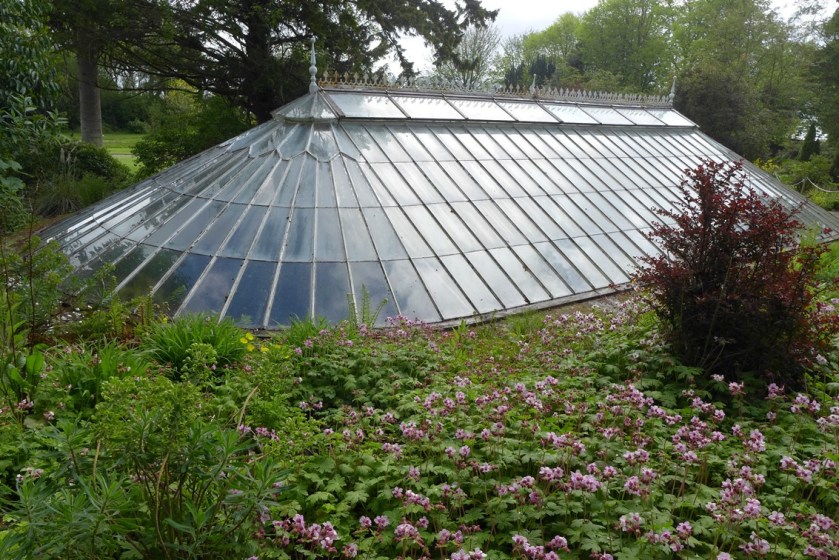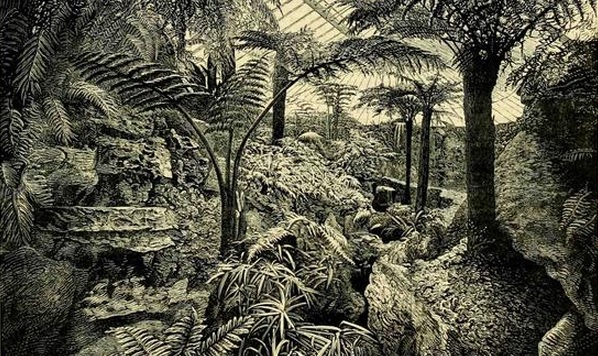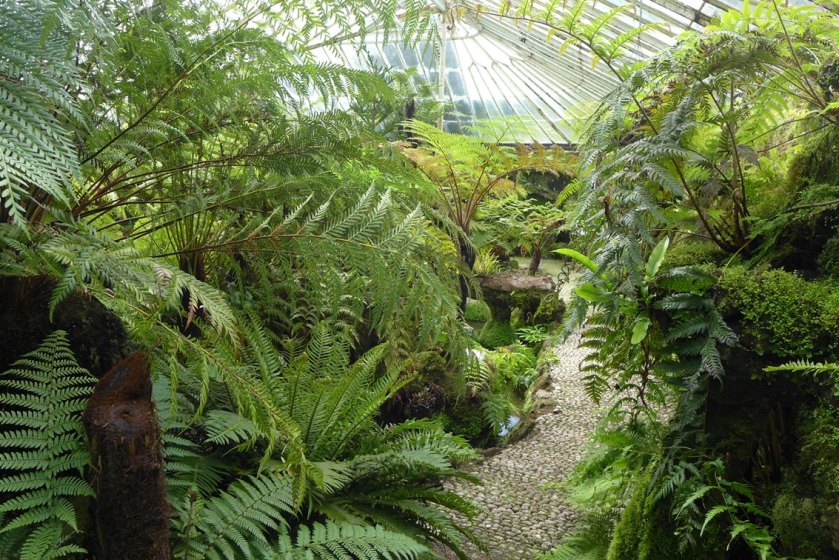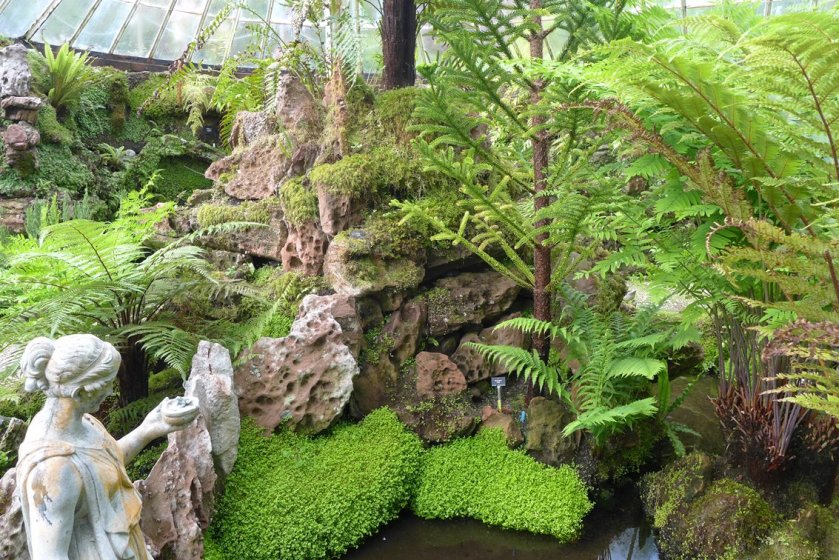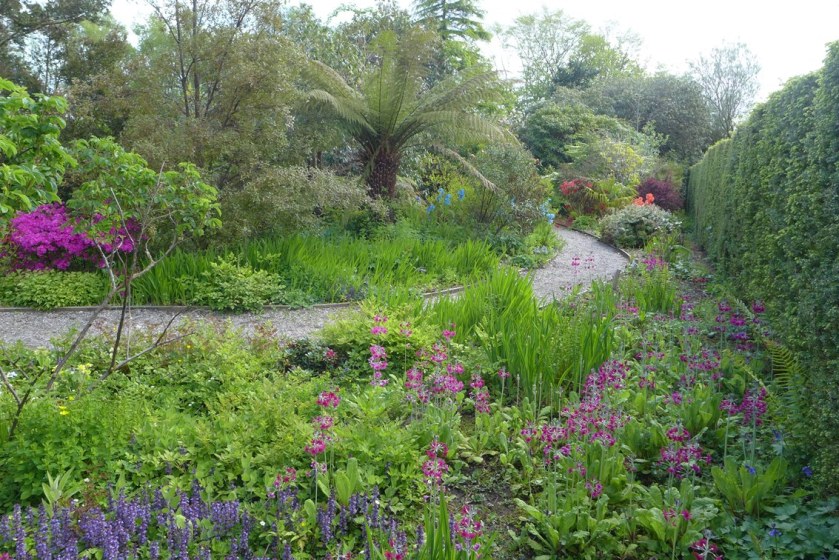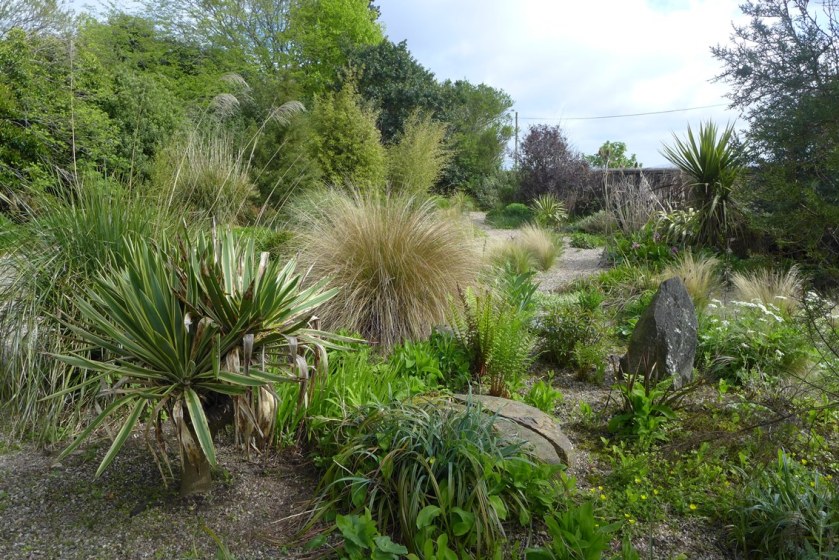After a day in Victorian Rothesay, we decided to visit one of the island’s attraction, Ascog Hall Fernery, which is located a couple of miles South, along the coast. We weren’t exactly sure of what to expect after reading the words “Victorian” and “sunken”, but got pleasantly intrigued after getting a glimpse of it for real:
The fernery was built around 1870, using a unique shape and design. By being “sunken” into the ground, this allowed temperature and humidity to remain fairly stable, creating an ideal habitat for ferns. This is a print from the Gardener’s Chronicle in 1879, which shows the inside of the glasshouse…
And this is the glasshouse now:
The fernery was rediscovered in 1986 by new owners of the estate, having been neglected for decades. There was no more glass, and most of the ferns had been replaced by brambles. With the help of the Royal Botanic Garden Edinburgh, which re-supplied many of the plants, the fernery was reopened in 1997. Here’s a before- after:
In addition to the unique structure of the fernery, the plant diversity is astonishing:
One fern in particular survived the neglect over the 20th century, the now called “1000 year old fern” Todea barbara. This is an imposing plant, thought to be the oldest fern growing in the UK:
In a very Victorian fashion, the fernery comes complete with a stream, little fountains, delicate cast iron railings and sculptures:
The fernery is the most unusual feature, but certainly not the only reason to visit Ascog Hall! The garden around the fernery may be small for Scottish standards, but it is full of style. At this time of the year (May), the reds and pinks of Rhododendron and Primula contrast with the striking blue of Meconopsis, and the tender green of the tree ferns’ new leaves:
Some close-ups of interesting plants that can be found in the garden:
A nice sign on the story of Cedrus deodara (Himalayan cedar), and how the tree was brought to Britain by plant hunter Thomas Thomson, also famous for his introductions of rhododendrons. The climate at Ascog Hall seems to suit it well.
A more formal garden, with huge gunneras and colourful borders: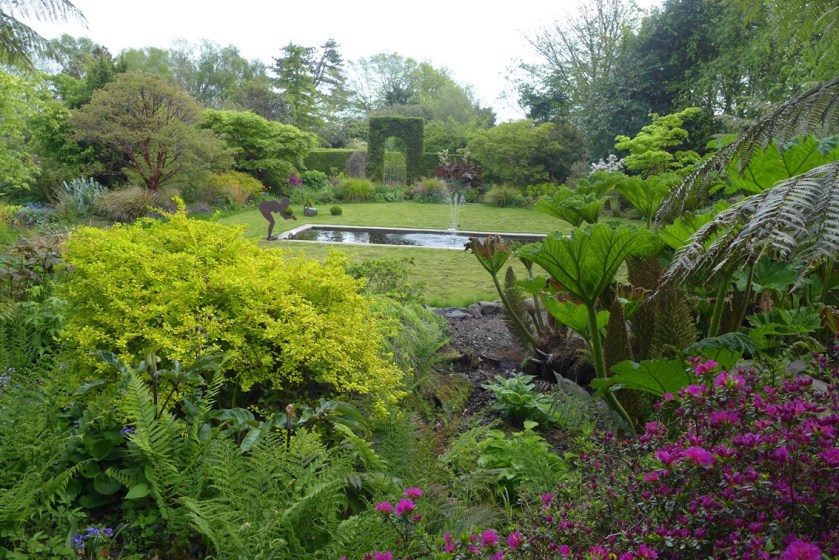
There’s also a dry garden, with grasses and coastal plants:
Even the walk back to the house is stunning, the deep red maples and berberis contrast so well with the yellow rhododendron and grasses. Note the Araucaria at the back – monkey puzzles were popular at Victorian times, and there are many left on the island!

